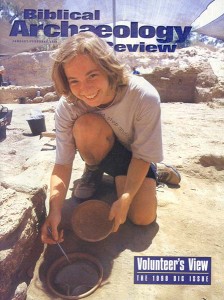Volunteers’ Views
Exploring Biblical Roots
On site at Bethsaida the sun rose over a landscape that had not changed for 5,000 years. People saw the same sun rise here in 2800 B.C. while they worshiped their “strange gods”; here the plundering soldiers of Joshua came and claimed the village as theirs; from here the king of the Jebusites sent his daughter as a bride to King David; to here their son Absalom fled after he killed his half-brother; here, in the eighth century B.C., the Assyrian army swept through, raping and looting; to here Israelites returned after the Babylonian Exile; here tetrarch Philip Herod (son of Herod the Great) made this village a city during the time of Jesus; here Josephus led the fight against the Romans in 67 A.D.; and, finally, here I brought a group of volunteers, some recruited from my New Testament class at Rocky Mountain College in Billings, Montana, for a chance to be a part of history and to explore the roots of Christianity.
At first my group timorously scraped the ground with trowels. As confidence grew, people began digging with pickaxes. We found pig bones and realized that whoever lived here didn’t keep kosher. We found a grinding stone, a hook for holding down fishnets, an instrument for gathering grapes, a coin and part of a spindle. We uncovered an oven and a small purple object that turned out to be a coin from the fourth century B.C. We found anchors for boats, an instrument for putting oil on athletes, a golden earring, a complete Iron Age pot and lots of wine jugs from Rhodes. We ate popsicles a mile and a half from the Sea of Galilee (which was much nearer during the time of Jesus). With all the hard work and the many finds our three weeks flew by.
Already a library member? Log in here.
Institution user? Log in with your IP address.

